Do you have big empty spots in your garden? Planting large-leaf plants could be the perfect solution. These plants not only fill space but also make a bold statement with their dramatic foliage.
Large-leaf plants bring a unique touch to any garden. They’re great for covering bare patches or adding lush greenery. Imagine the impact of their big, beautiful leaves in your outdoor space.
Let’s explore some popular large-leaf plants that can transform your garden.
5 Key Takeaways on Plants With Big Leaves
- You can explore a wide variety of plants with large leaves. There are 23 different options, from tropical giants like the Giant Rhubarb to temperate choices such as the Cast Iron Plant.
- These big-leaf plants flourish in various conditions. They can thrive in full sun, partial shade, or full shade. They also need different soil types like moist, well-drained, or rich organic soils.
- Some plants, like the Sacred Lotus and Butterbur, bloom with striking flowers. Others, like the Fiddle Leaf Fig and Cast Iron Plant, rarely bloom indoors. They focus more on their dramatic foliage.
- Most of these plants prefer bright indirect light. However, plants like the Umbrella Plant and Big Leaf Ligularia do well in partial to full shade.
- Many featured plants, such as the Swiss Cheese Plant and Rubber Plant, are great for indoor spaces. They have impressive foliage and adapt well indoors. Others, like the Bird of Paradise, are better suited for outdoor environments.
23 Plants With Big Leaves
Big-leaf plants catch the eye and are loved by lots of plant enthusiasts. I’m excited to share with you 23 amazing plants that have large leaves. I’ll dive into what kind of soil they like, how much light they need, and other important details.
1. Umbrella Plant (Darmera peltata)
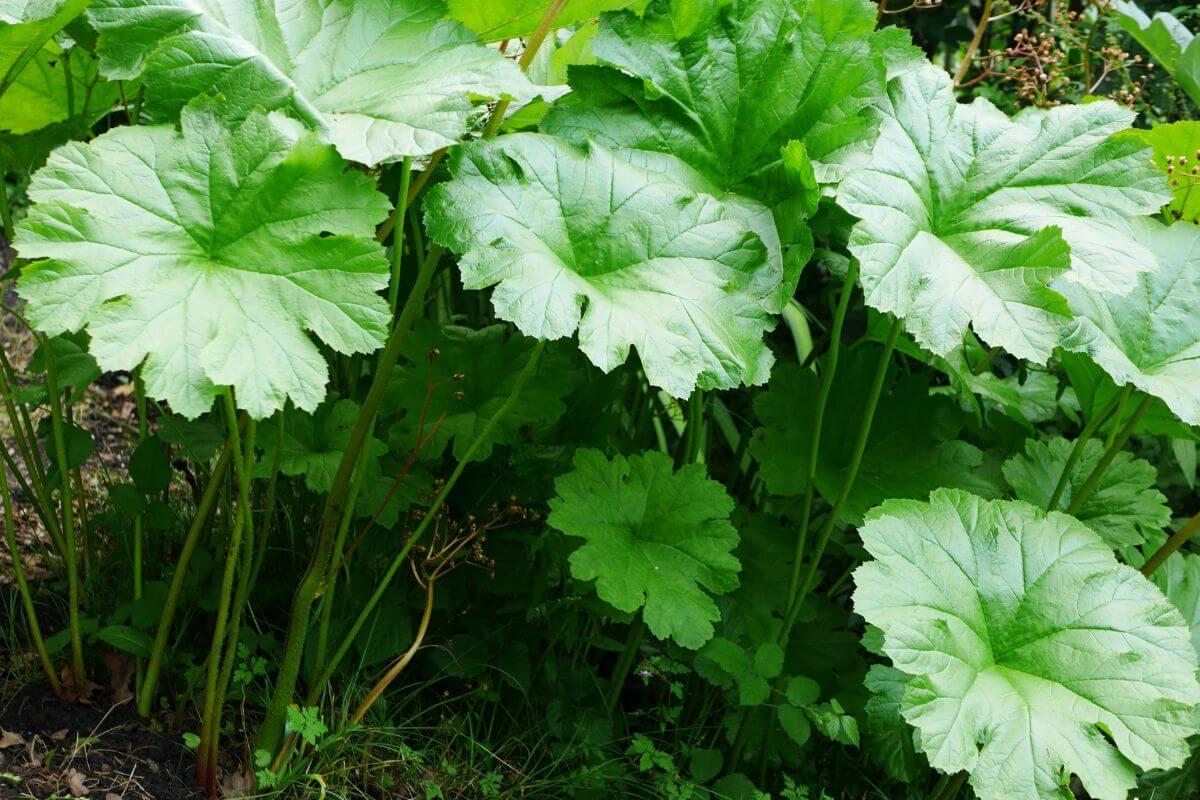
| Feature | Details |
|---|---|
| Height | 3-5 feet tall |
| Bloom Time | Spring |
| Soil | Moist, well-drained |
| Light | Partial to full shade |
The Umbrella Plant, Darmera peltata, is a perennial native to the western United States. It thrives in moist, shady environments and is often found near streams. The plant features large, rounded leaves that can reach up to 24 inches wide.
In spring, it produces clusters of pink or white flowers on tall stalks before the leaves fully emerge. This plant is ideal for water gardens and shaded borders.
2. Butterbur (Petasites)
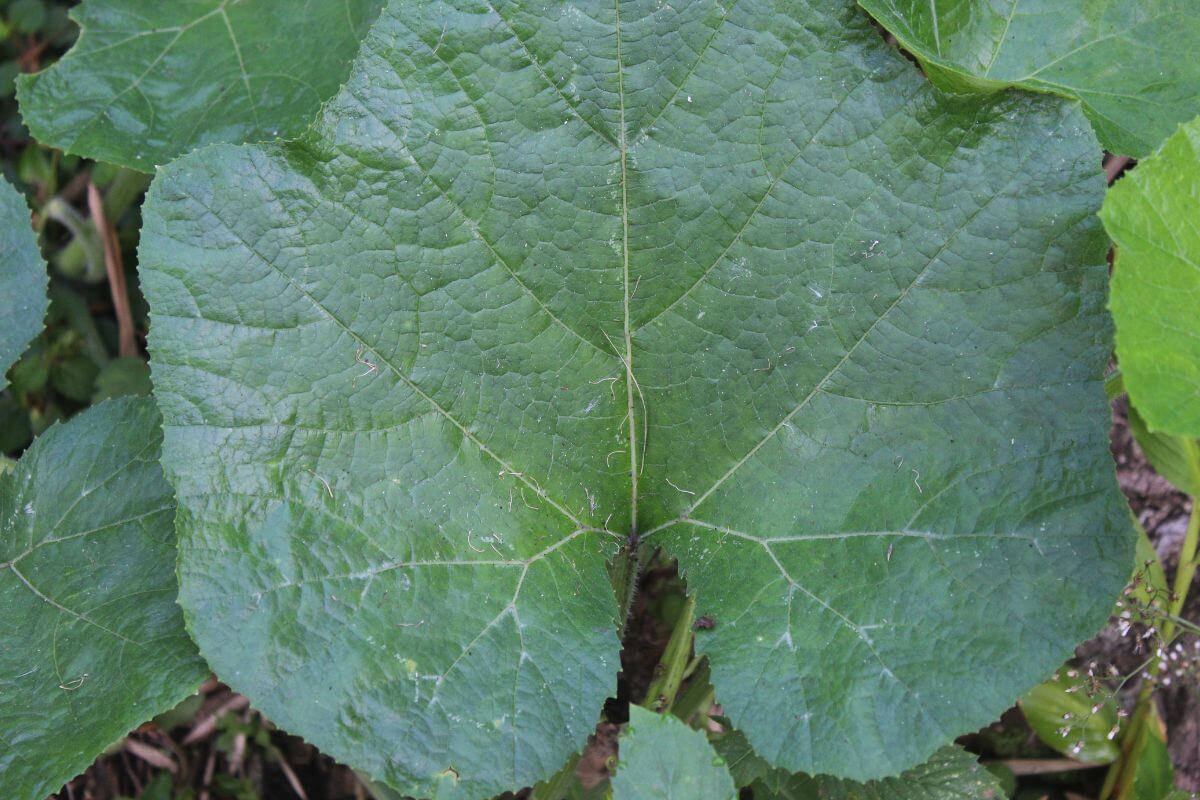
| Feature | Details |
|---|---|
| Height | 2-3 feet tall |
| Bloom Time | Early spring |
| Soil | Moist, well-drained |
| Light | Indirect light to full shade |
Butterbur, Petasites, is known for its massive, heart-shaped leaves that can grow up to 3 feet wide. Native to Europe and Asia, it prefers wet, shady areas and is often used in naturalized plantings.
The plant blooms in early spring with small, fragrant flowers before the leaves appear. Butterbur is effective for ground cover but can be invasive.
3. Mayapple (Podophyllum)
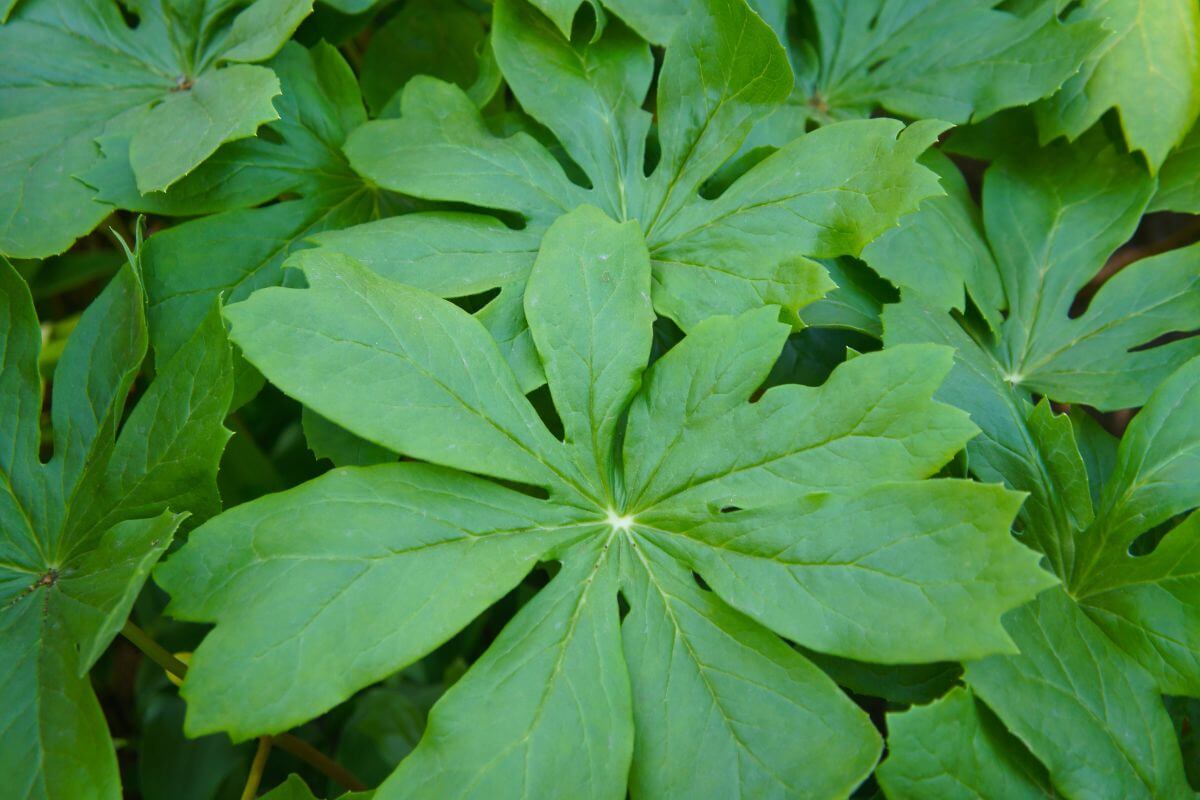
| Feature | Details |
|---|---|
| Height | 1-1.5 feet tall |
| Bloom Time | Late spring |
| Soil | Moist, well-drained |
| Light | Indirect light to full shade |
Mayapple, Podophyllum, is a woodland perennial native to North America. It features large, umbrella-like leaves and produces a single white flower beneath the foliage in late spring.
The plant prefers shady, moist environments and is often found in forested areas. The fruit is edible when ripe but toxic when unripe.
4. Brazilian Giant-Rhubarb (Gunnera manicata)
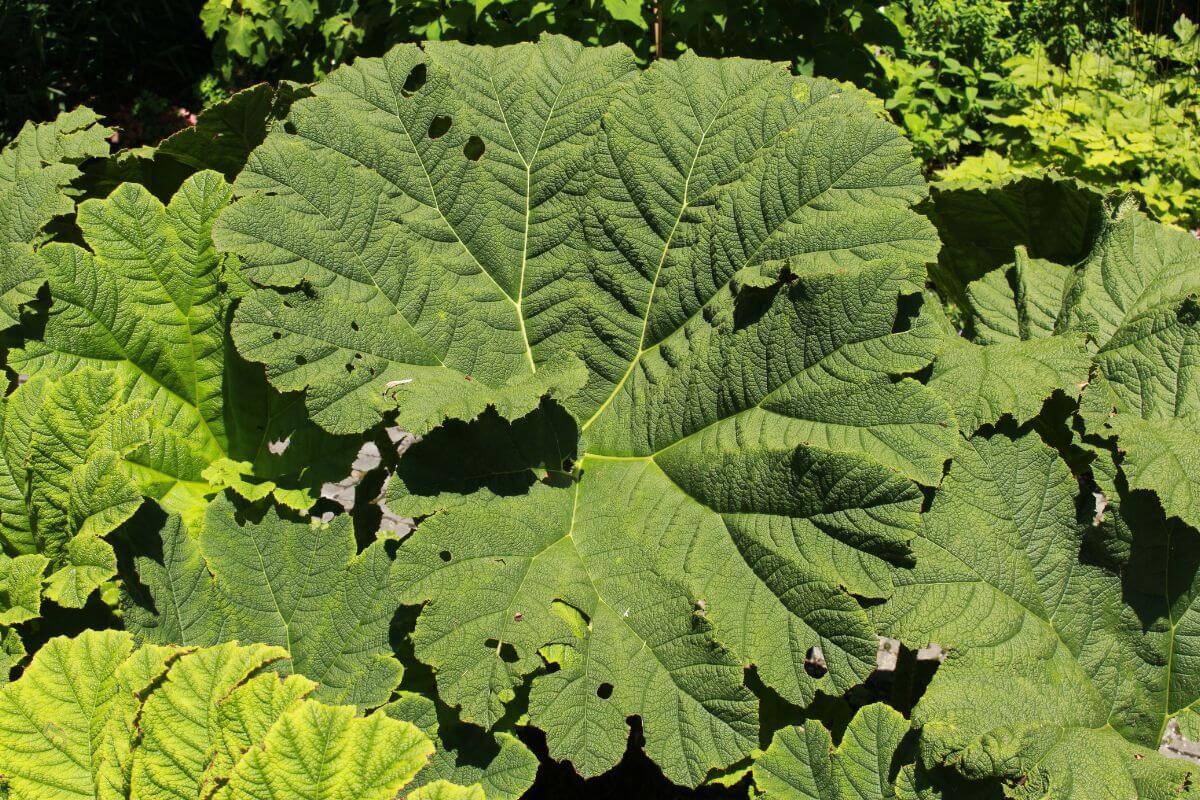
| Feature | Details |
|---|---|
| Height | 6-10 feet tall |
| Bloom Time | Summer |
| Soil | Moist, well-drained |
| Light | Full sun to partial shade |
Brazilian giant-rhubarb, Gunnera manicata, is a striking perennial known for its enormous leaves that can reach up to 6 feet across. Native to Brazil, it thrives in wet, sunny locations and is often used in large water gardens.
The plant produces small, reddish flowers on tall spikes. It requires ample space and consistent moisture.
5. Hosta (Hosta)
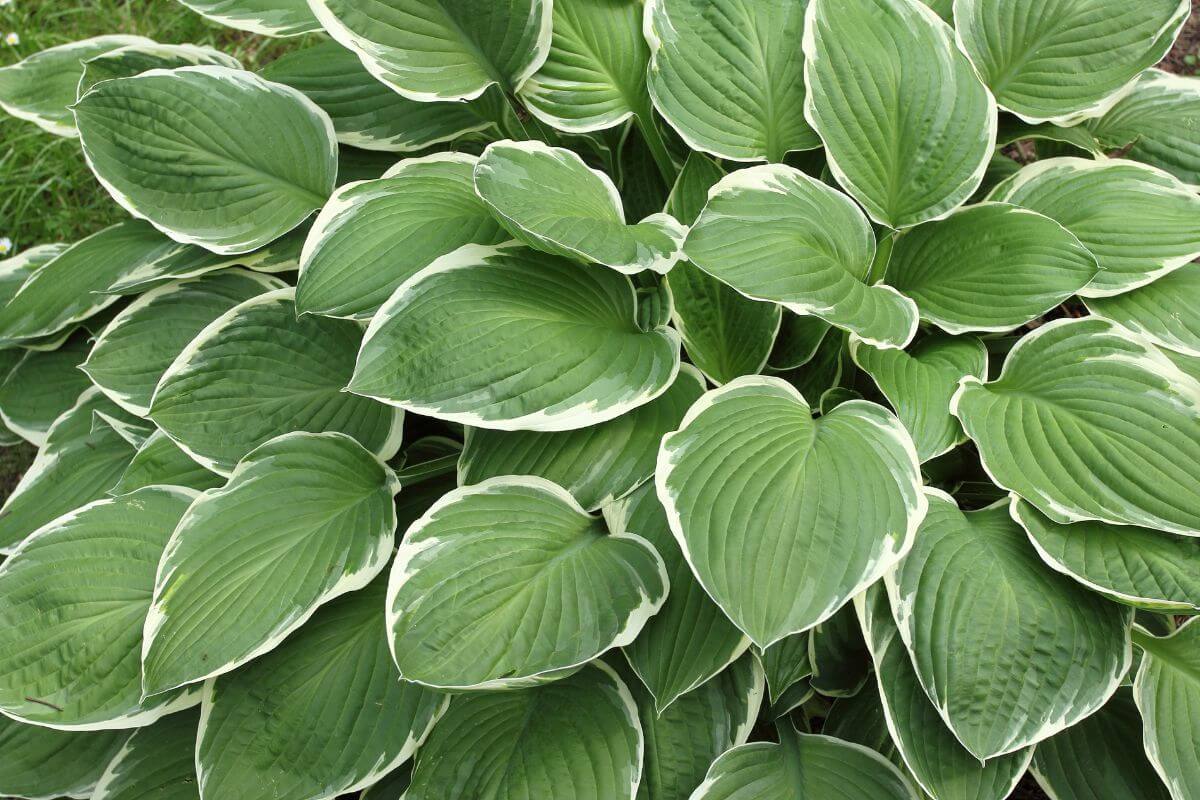
| Feature | Details |
|---|---|
| Height | 6-48 inches tall |
| Bloom Time | Summer |
| Soil | Loamy, well-drained |
| Light | Partial shade to indirect light |
Hostas come in various sizes and colors, ranging from green to blue to variegated. This plant is prized for its broad, heart-shaped foliage, which can vary in size from 6 inches to over 3 feet long, depending on the variety.
Hostas are easy to grow and maintain, making them ideal for shady garden areas. They produce tall flower spikes in summer, adding vertical interest to the garden.
6. Summer Ragwort (Ligularia dentata)
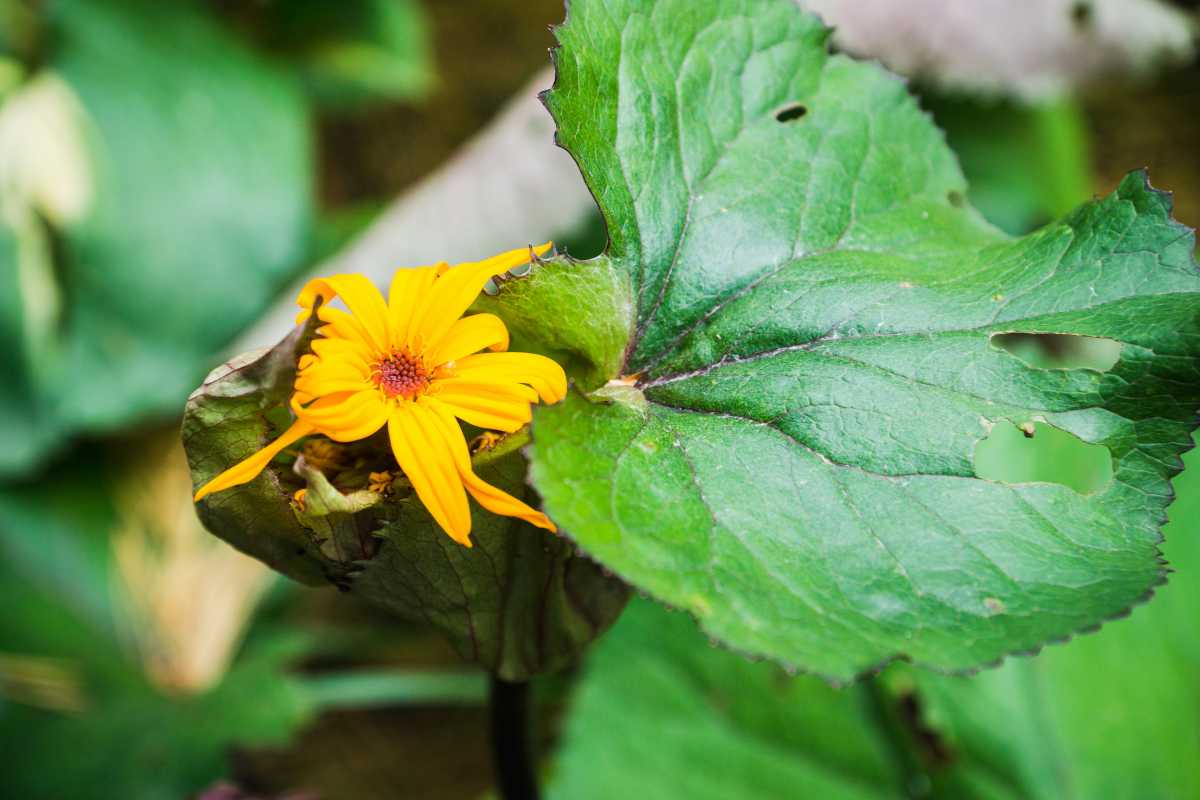
| Feature | Details |
|---|---|
| Height | 3-4 feet tall |
| Bloom Time | Late summer |
| Soil | Moist or well-drained soil |
| Light | Partial to full shade |
Summer Ragwort or Leopard Plant, known scientifically as Ligularia dentata, is a standout in any garden. What makes it so special? Its huge, round leaves and eye-catching yellow-orange flowers.
This plant calls China and Japan home and loves to grow in cool, damp spots away from the sun. If you’re looking to add a touch of boldness to your garden, this perennial is a fantastic choice.
7. Sacred Lotus (Nelumbo nucifera)
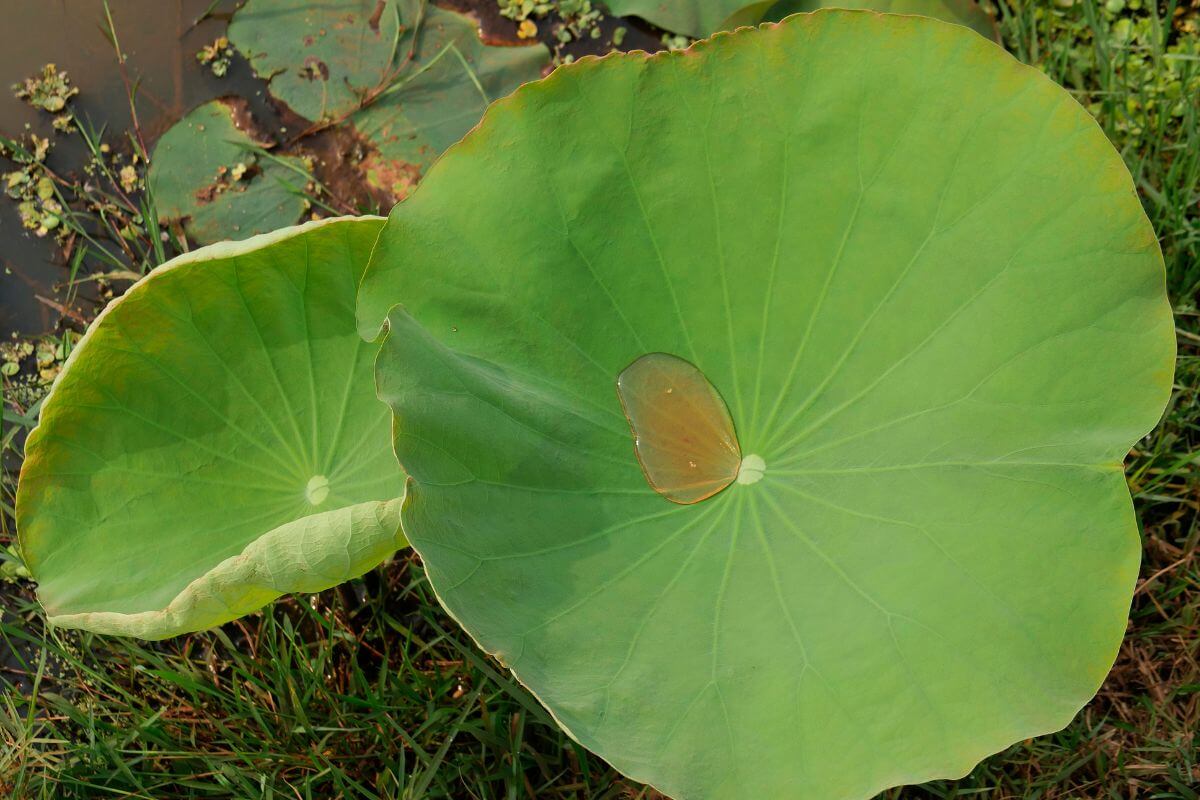
| Feature | Details |
|---|---|
| Height | 3-6 feet tall |
| Bloom Time | Summer |
| Soil | Aquatic |
| Light | Full sun |
Sacred Lotus (Nelumbo nucifera) is renowned for its large, distinctive leaves, which can reach up to 2 feet in diameter. Native to Asia, it thrives in warm, sunny water gardens.
The plant produces fragrant, pink, or white flowers that rise above the water’s surface. The leaves can reach up to 2 feet wide in diameter.
8. Rhubarb (Rheum rhabarbarum)
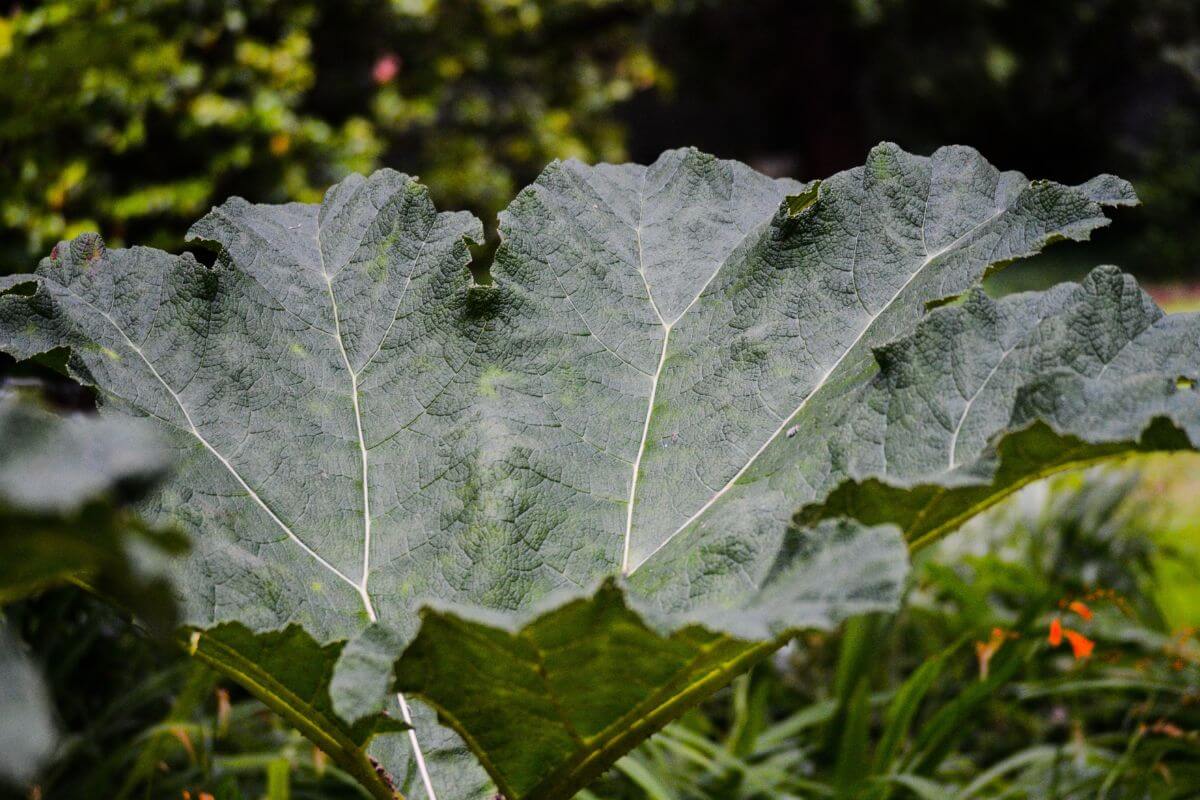
| Feature | Details |
|---|---|
| Height | 2-3 feet tall |
| Bloom Time | Spring |
| Soil | Well-drained |
| Light | Full sun to indirect light |
Rhubarb (Rheum rhabarbarum) is known for its large, broad leaves, which can span up to 18 inches across. The plant features thick, reddish petioles and large, heart-shaped leaves.
It is commonly grown in vegetable gardens and used in pies and desserts. Rhubarb prefers cool climates and well-drained soil.
9. Elephant Ear (Colocasia esculenta)
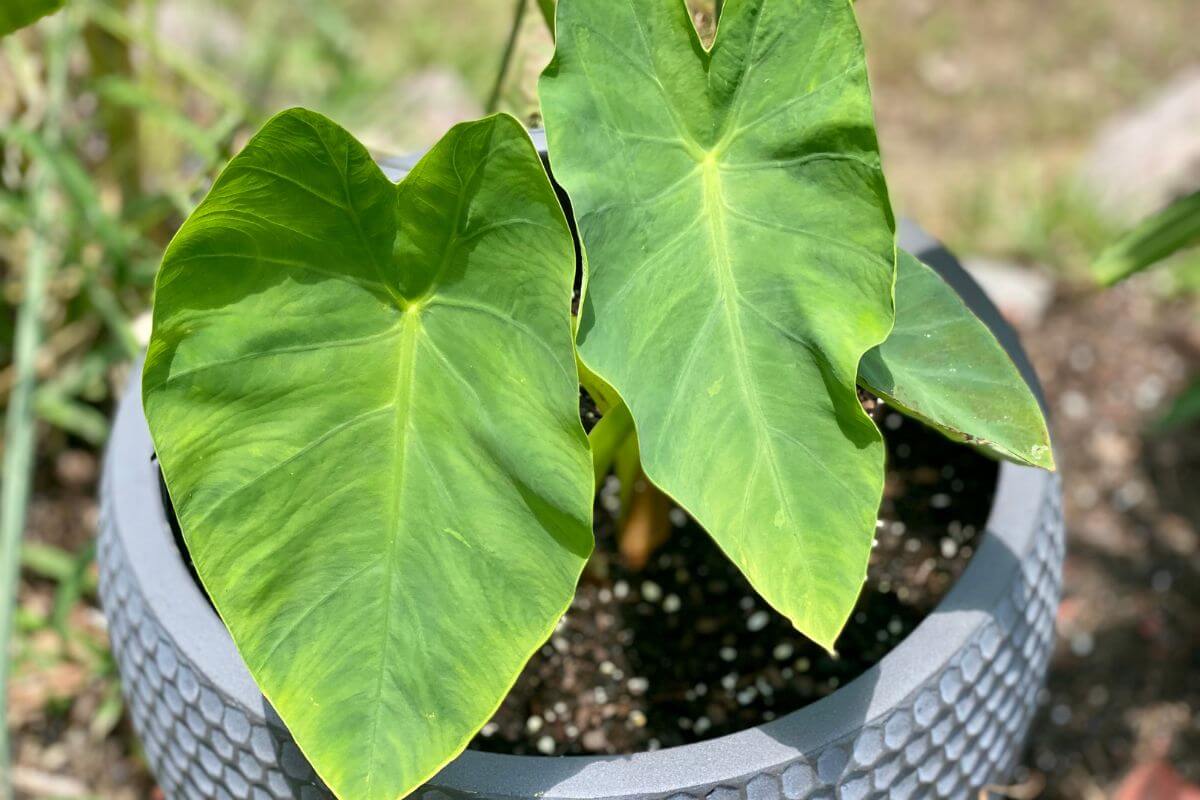
| Feature | Details |
|---|---|
| Height | 3-6 feet tall |
| Soil | Moist, well-drained |
| Light | Full sun to indirect light |
Elephant Ears (Colocasia esculenta) are renowned for their large, dramatic leaves that can reach up to 3 feet in length and width. Native to Southeast Asia, they thrive in warm, moist environments.
The plant is often grown for its dramatic foliage and is used in water gardens and as a landscape accent. The leaves can reach up to 3 feet in length.
10. Swiss Cheese Plant (Monstera deliciosa)
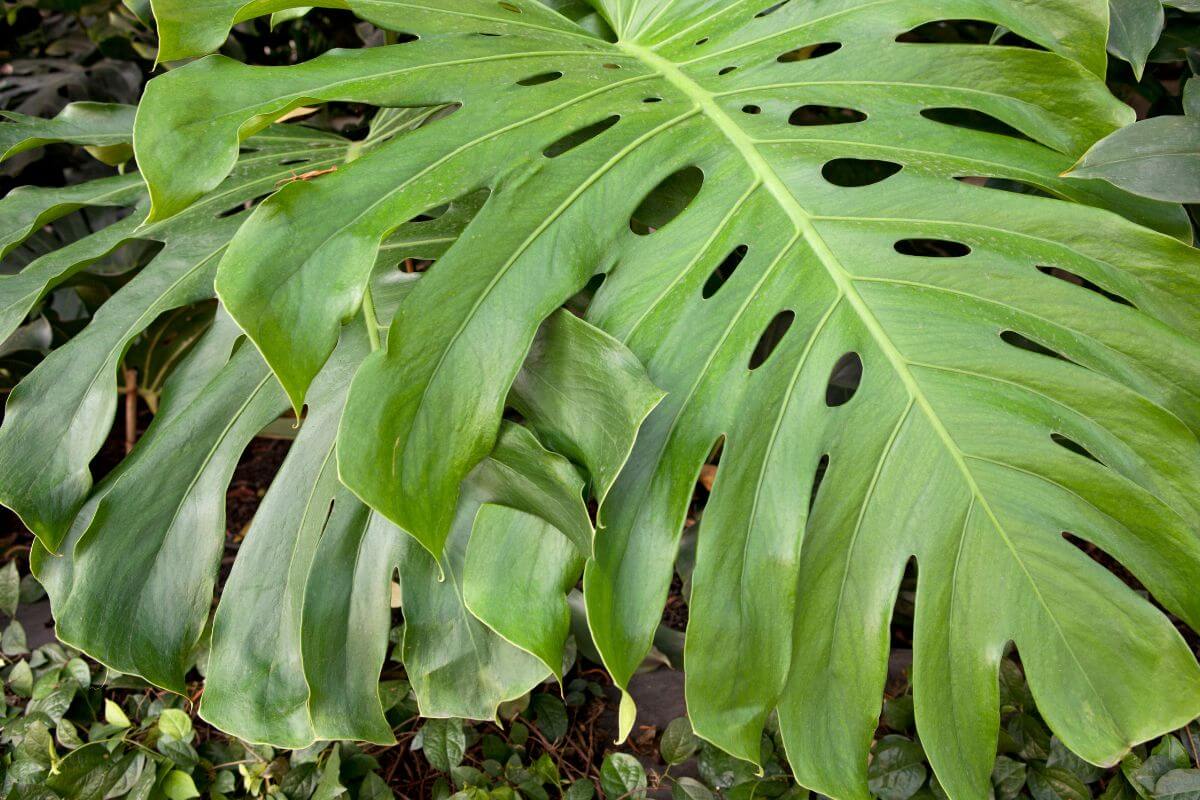
| Feature | Details |
|---|---|
| Height | Up to 8 feet tall |
| Soil | Well-drained |
| Light | Indirect light |
The Swiss Cheese Plant, Monstera deliciosa, is an evergreen perennial known for its large, perforated leaves. These large, glossy leaves can grow up to 12 inches long and are characterized by distinctive holes or “Swiss cheese” like cutouts. Native to Central America, it thrives in warm, humid environments.
The plant can grow up to 8 feet indoors and produces aerial roots that help it climb. It is a popular houseplant for its unique foliage and air-purifying qualities. Discover the benefits of the Monstera plant to see why you should have it in your garden.
11. Siberian Bugloss (Brunnera macrophylla)
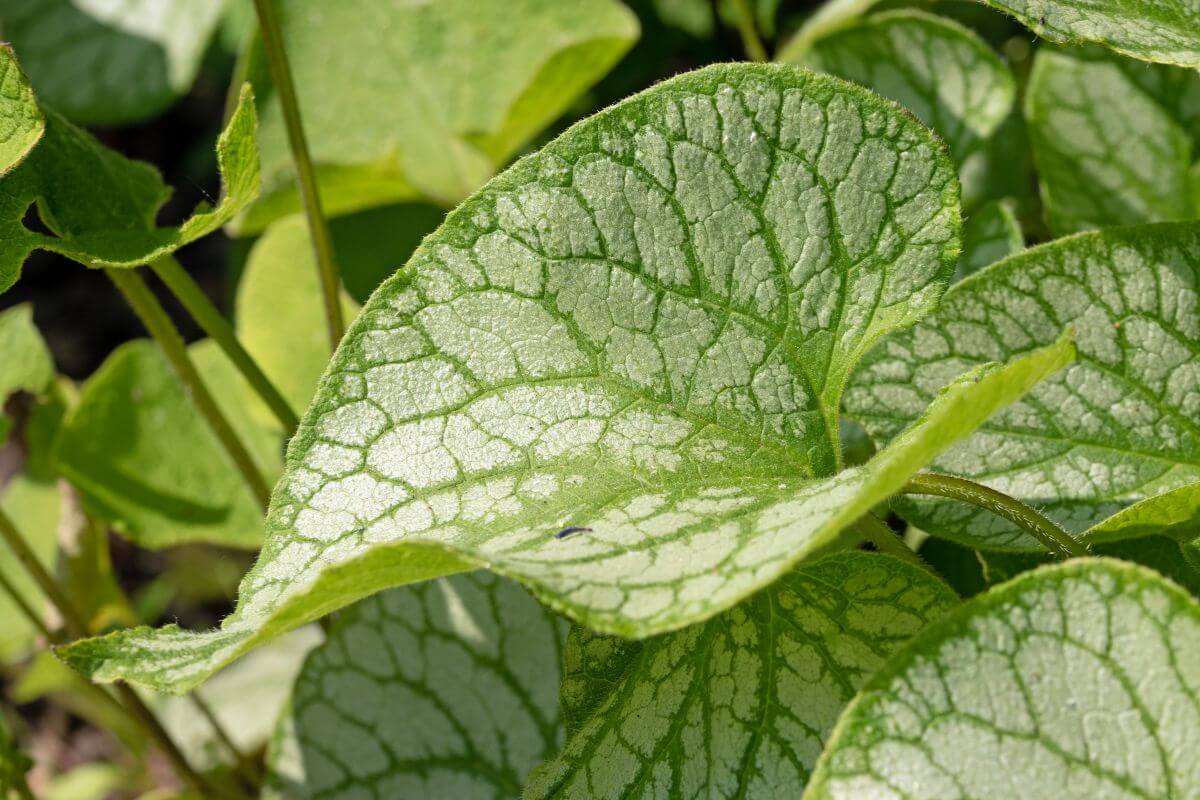
| Feature | Details |
|---|---|
| Height | 12-18 inches tall |
| Bloom Time | Spring |
| Soil | Moist, well-drained |
| Light | Shade to indirect light |
Siberian Bugloss, Brunnera macrophylla, is a shade-loving perennial with large, heart-shaped leaves and small blue flowers. These leaves can reach up to 12 inches in diameter and are typically a rich, deep green with a velvety texture. Native to Eastern Europe, it is often used in woodland gardens and shaded borders.
The plant blooms in spring and is known for its attractive foliage, which resembles that of hostas.
12. Japanese Fiber Banana (Musa basjoo)
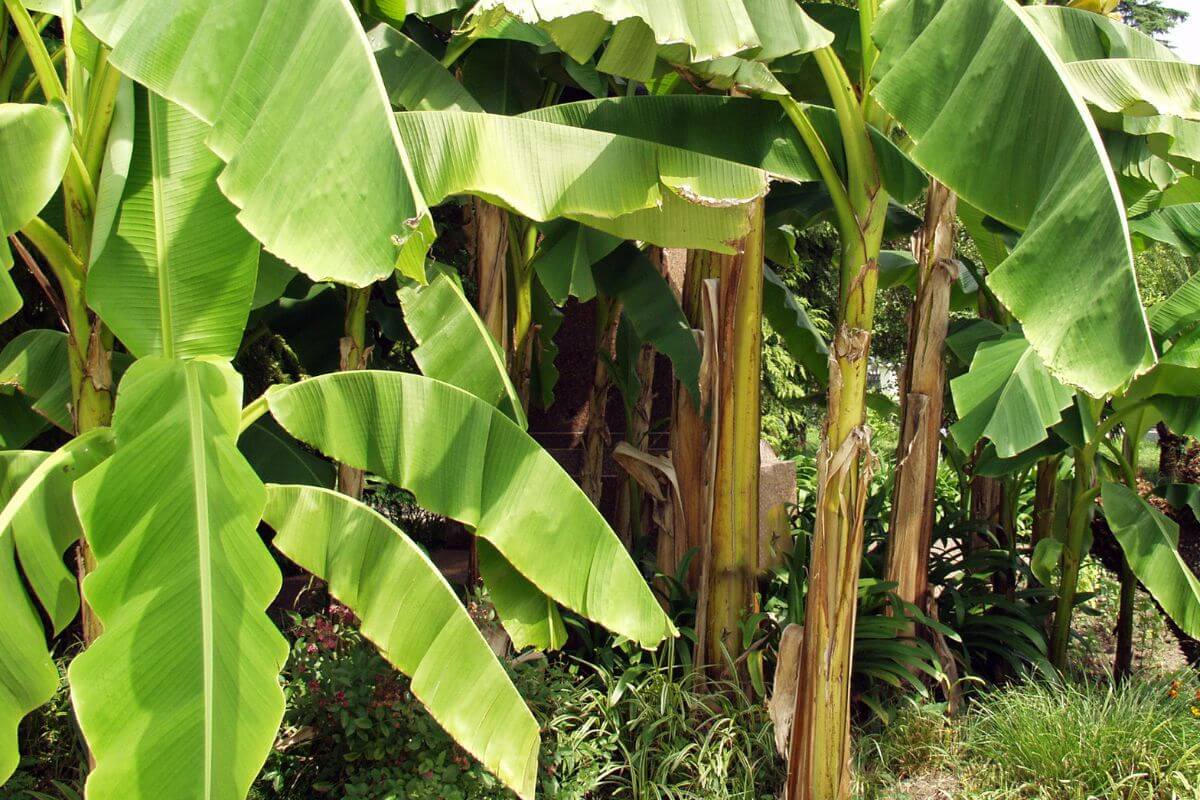
| Feature | Details |
|---|---|
| Height | 6-10 feet tall |
| Soil | Well-drained |
| Light | Full sun to indirect light |
Japanese Fiber Banana (Musa basjoo) is notable for its impressive, large leaves that can grow up to 6 feet long and 2 feet wide. The leaves are broad, elongated, and lance-shaped with a rich green color. Native to Japan, it can withstand cooler climates and is often grown as an ornamental plant.
This Japanese banana tree plant produces small, inedible bananas and can reach up to 10 feet in height. It adds a tropical feel to gardens and landscapes.
13. ‘Spider’s Web’ Japanese Aralia (Fatsia japonica)
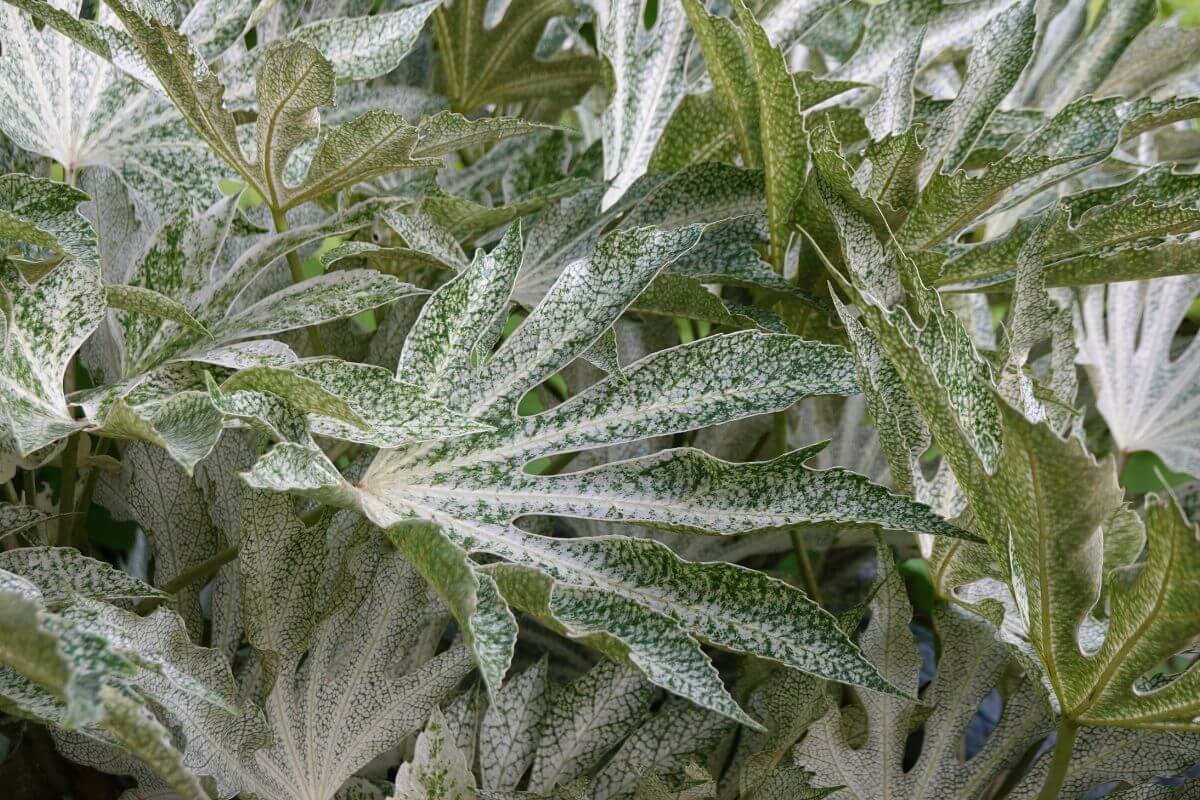
| Feature | Details |
|---|---|
| Height | Up to 6 feet |
| Bloom Time | Autumn |
| Soil | Well-drained, organically rich |
| Light | Full sun to part shade |
The ‘Spider’s Web’ Japanese Aralia is a striking evergreen shrub with variegated leaves that add a tropical feel to any space. The leaves can grow up to 12 inches across and are deeply lobed with a striking web-like pattern of white or cream speckles, which gives the plant its name.
It produces white flowers and blackberries in autumn and is easy to care for, thriving in both full sun and part shade. This plant prefers a somewhat sheltered location and is known for its low maintenance requirements.
14. Giant Silver Mullein (Verbascum bombyciferum)
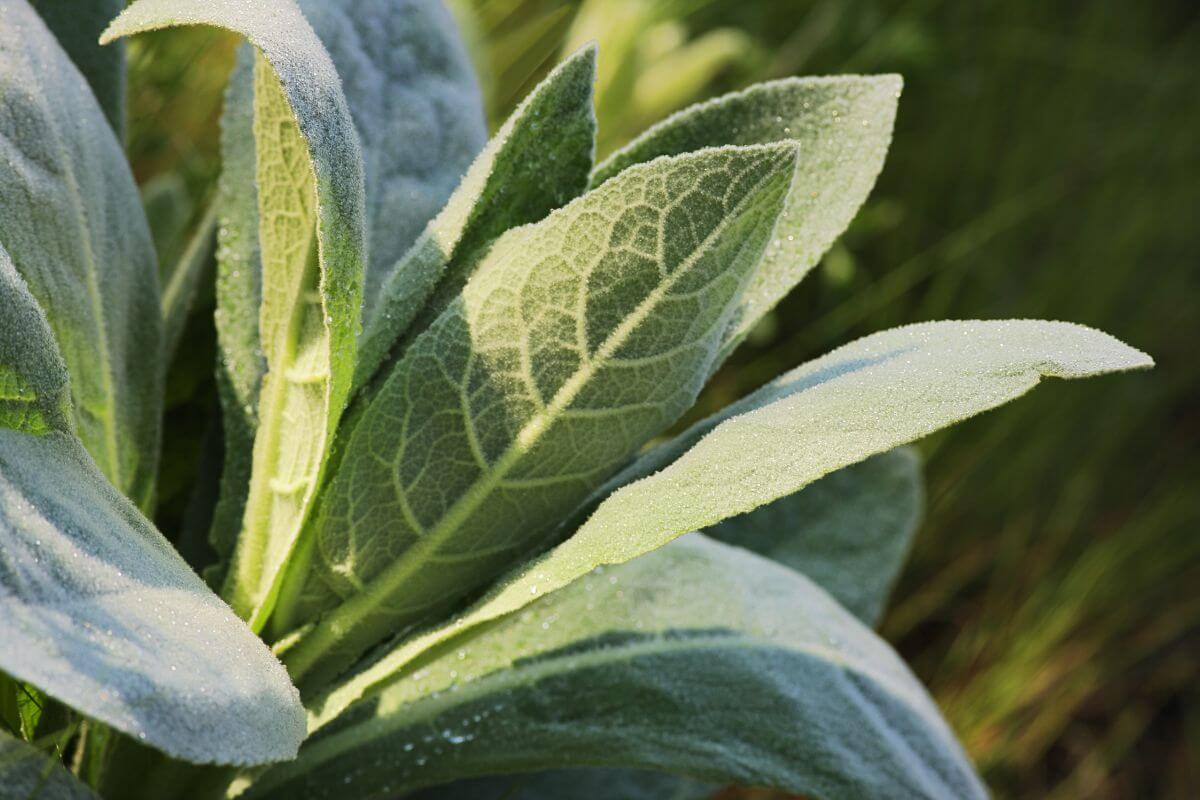
| Feature | Details |
|---|---|
| Height | Up to 6 feet |
| Bloom Time | Summer |
| Soil | Well-drained, poor soils |
| Light | Full sun |
Giant Silver Mullein is a biennial plant known for its tall, silvery foliage and yellow flowers that bloom in the second year. The leaves are oval or lance-shaped, covered with soft, woolly hairs that give them a silvery appearance, and can grow up to 2 feet long.
It is drought-tolerant and thrives in poor, well-drained soils. This plant is ideal for xeriscaping and can add vertical interest to a garden.
15. Flowering Sea Kale (Crambe maritima)

| Feature | Details |
|---|---|
| Height | 3 to 4 feet |
| Bloom Time | Late spring to early summer |
| Soil | Well-drained |
| Light | Direct sunlight to part shade |
Flowering Sea Kale is a perennial plant with large, glossy leaves and clusters of small, white, fragrant flowers.
It is tolerant of coastal conditions and prefers well-drained soil. This plant is a great addition to ornamental gardens for its unique foliage and floral display.
16. Caladiums (Caladium)
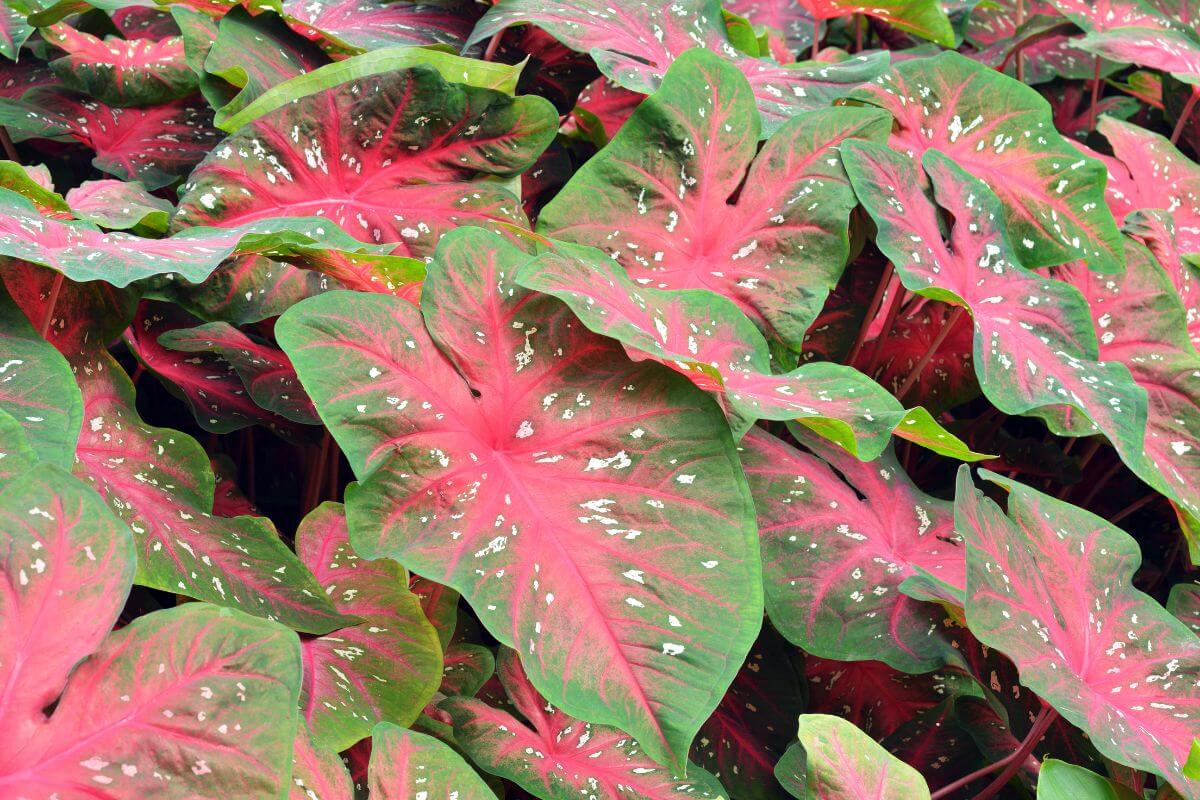
| Feature | Details |
|---|---|
| Height | 1 to 2 feet |
| Soil | Moist, well-drained, acidic soil |
| Light | Bright, indirect light |
Caladiums are known for their large, heart-shaped leaves that come in various colors, including red, pink, white, and green.
They thrive in heat and humidity and prefer bright, indirect light. These plants are often used for their decorative foliage.
17. Fiddle Leaf Fig (Ficus lyrata)
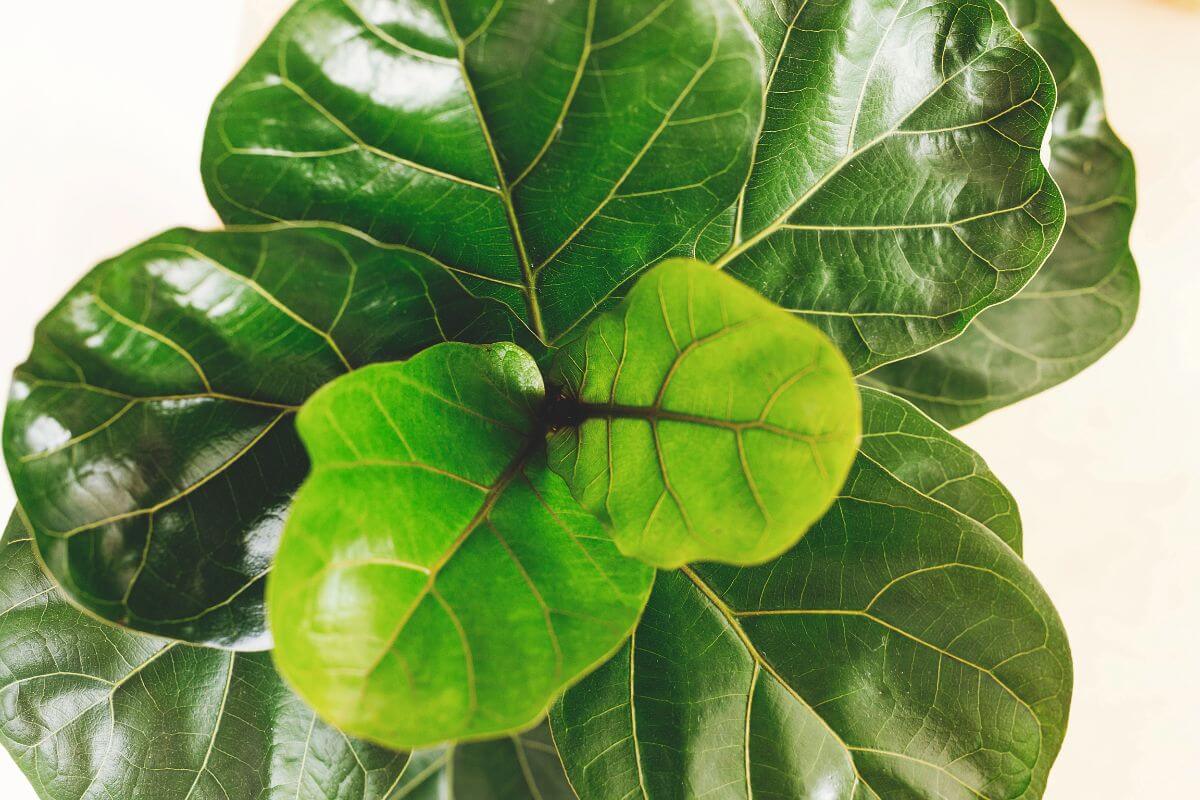
| Feature | Details |
|---|---|
| Height | Up to 10 feet indoors |
| Bloom Time | Rarely blooms indoors |
| Soil | Rich, well-drained soil |
| Light | Bright, indirect light |
The Fiddle Leaf Fig is popular for its large, violin-shaped leaves and dramatic appearance. The leaves are dark green and glossy, and have a prominent, wavy edge, creating a dramatic and lush look.
This plant can be finicky but is highly valued for its aesthetic appeal and air-purifying qualities.
18. Bird of Paradise (Strelitzia nicolai)
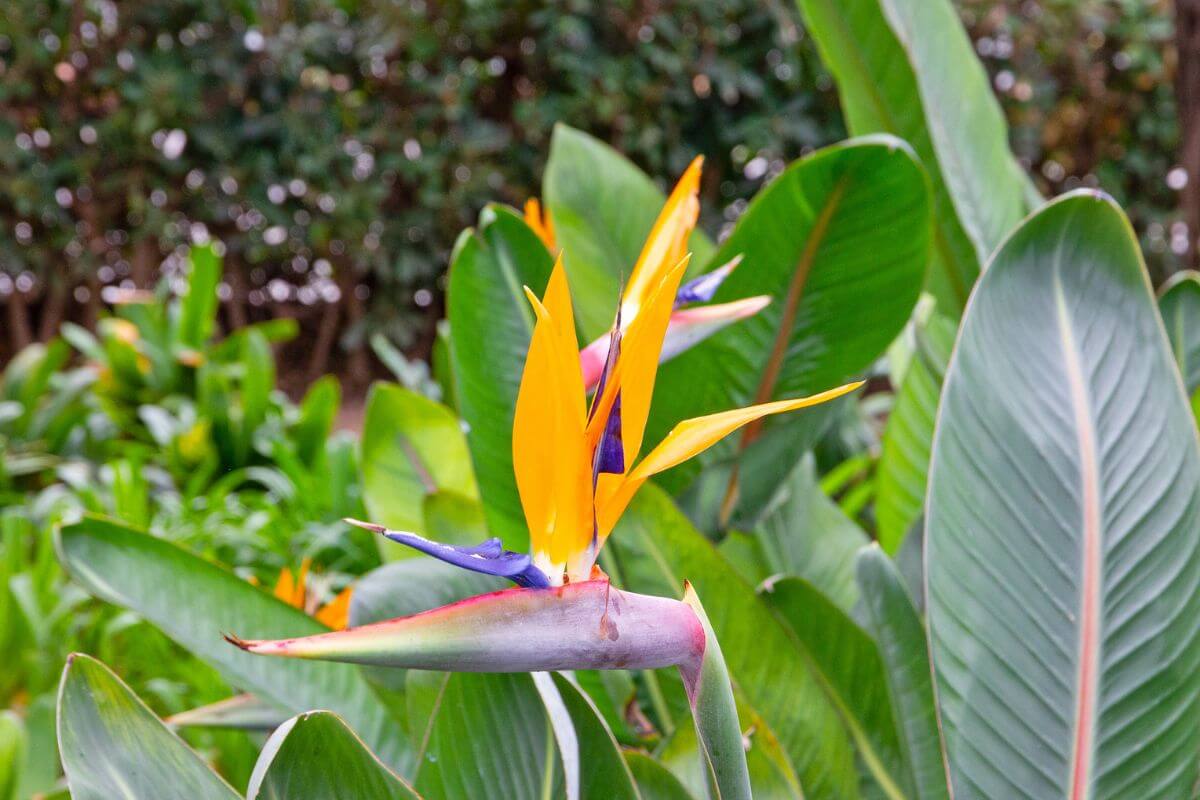
| Feature | Details |
|---|---|
| Height | Up to 20 feet |
| Bloom Time | Spring to summer |
| Soil | Rich, well-draining soil |
| Light | Bright light |
Bird of Paradise is a tropical plant known for its large, banana-like leaves and striking flowers that resemble a bird in flight. It thrives in bright light and well-drained soil. This plant can add a dramatic touch to any indoor or outdoor space.
- Learn more about the Bird of Paradise Plant
19. Philodendron Selloum (Philodendron bipinnatifidum)
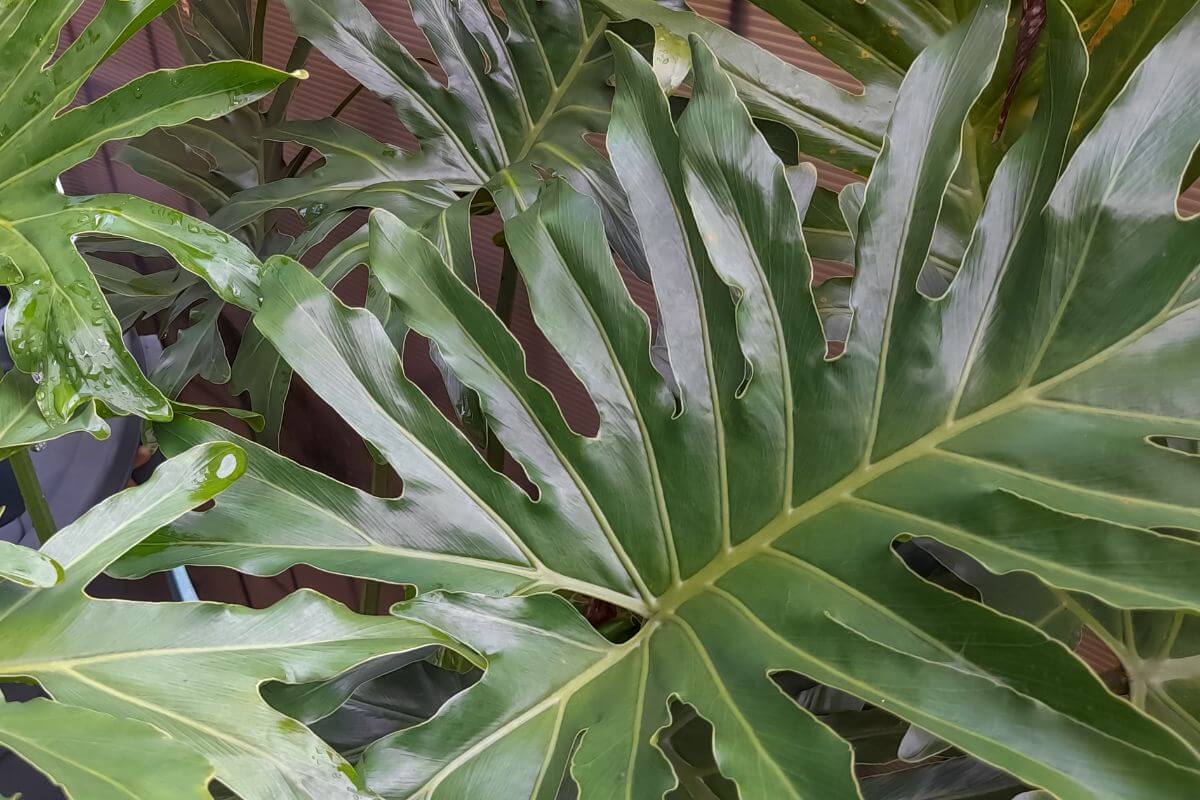
| Feature | Details |
|---|---|
| Height | Up to 6 feet indoors |
| Bloom Time | Rarely blooms indoors |
| Soil | Well-draining |
| Light | Bright, indirect light |
Philodendron Selloum, or Tree Philodendron, features large, deeply lobed leaves. It is easy to care for and prefers bright, indirect light. This plant is known for its lush, tropical appearance and can grow quite large.
- Read more: Philodendron Selloum Grow Guide
20. Rubber Plant (Ficus elastic)
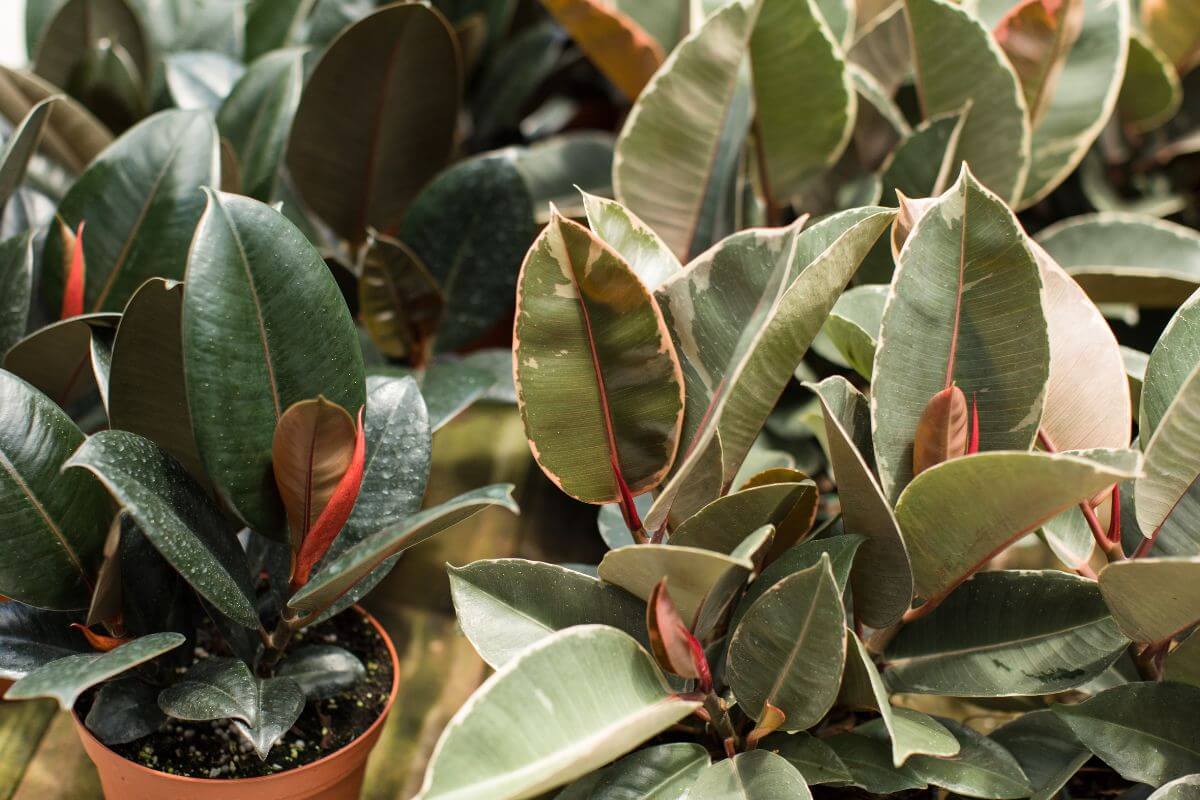
| Feature | Details |
|---|---|
| Height | Up to 10 feet indoors |
| Bloom Time | Rarely blooms indoors |
| Soil | Rich, well-draining soil |
| Light | Bright, indirect light |
Rubber Plant (Ficus elastica) is known for its large, glossy leaves that can grow up to 12 inches long and 6 inches wide. It prefers bright, indirect light and well-drained soil. This plant is easy to care for and can grow tall, making it a popular choice for indoor greenery.
21. Cast Iron Plant (Aspidistra elatior)
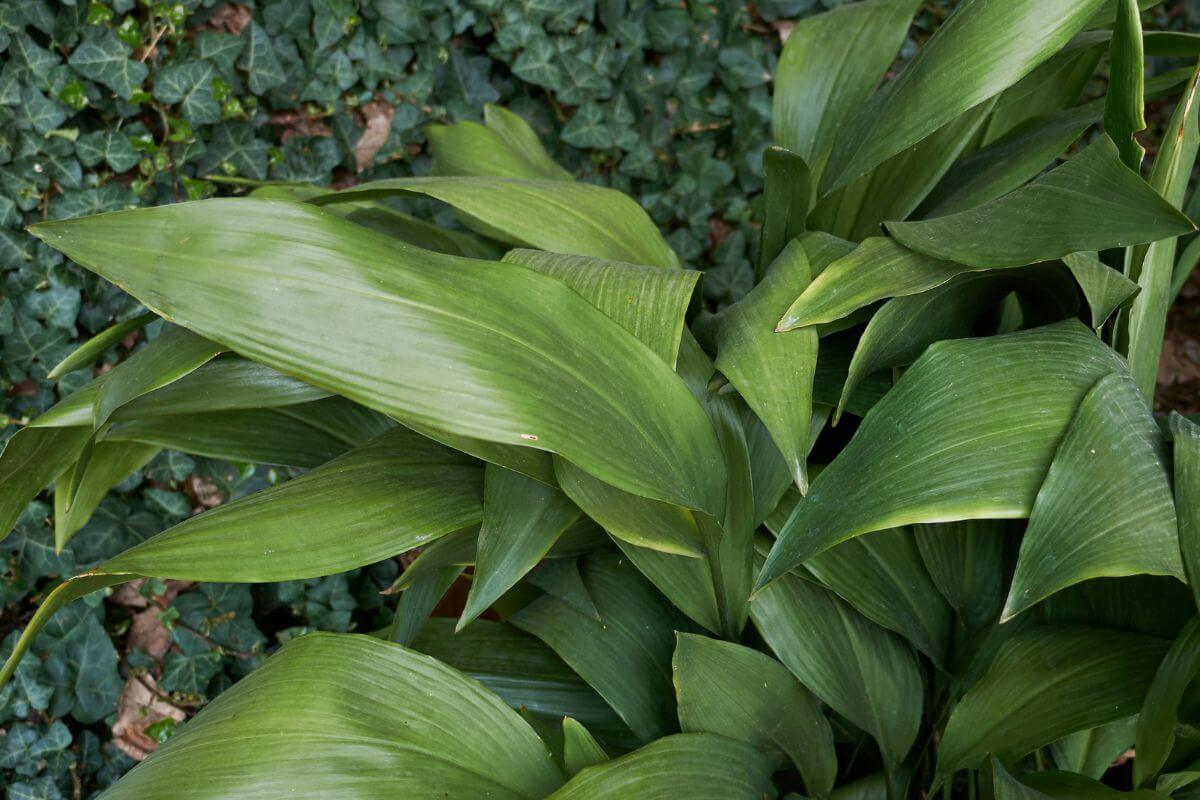
| Feature | Details |
|---|---|
| Height | Up to 3 feet |
| Bloom Time | Rarely blooms indoors |
| Soil | Well-draining |
| Light | Low to moderate light |
The Cast Iron Plant (Aspidistra elatior) is known for its large, robust leaves that can grow up to 1.5 feet long and 0.5 feet wide. The leaves are dark green, leathery, and oval-shaped, with a smooth texture and a slight undulation along the edges.
- Read more: Cast Iron Plant Grow and Care Guide
22. Alocasia (Alocasia amazonica)
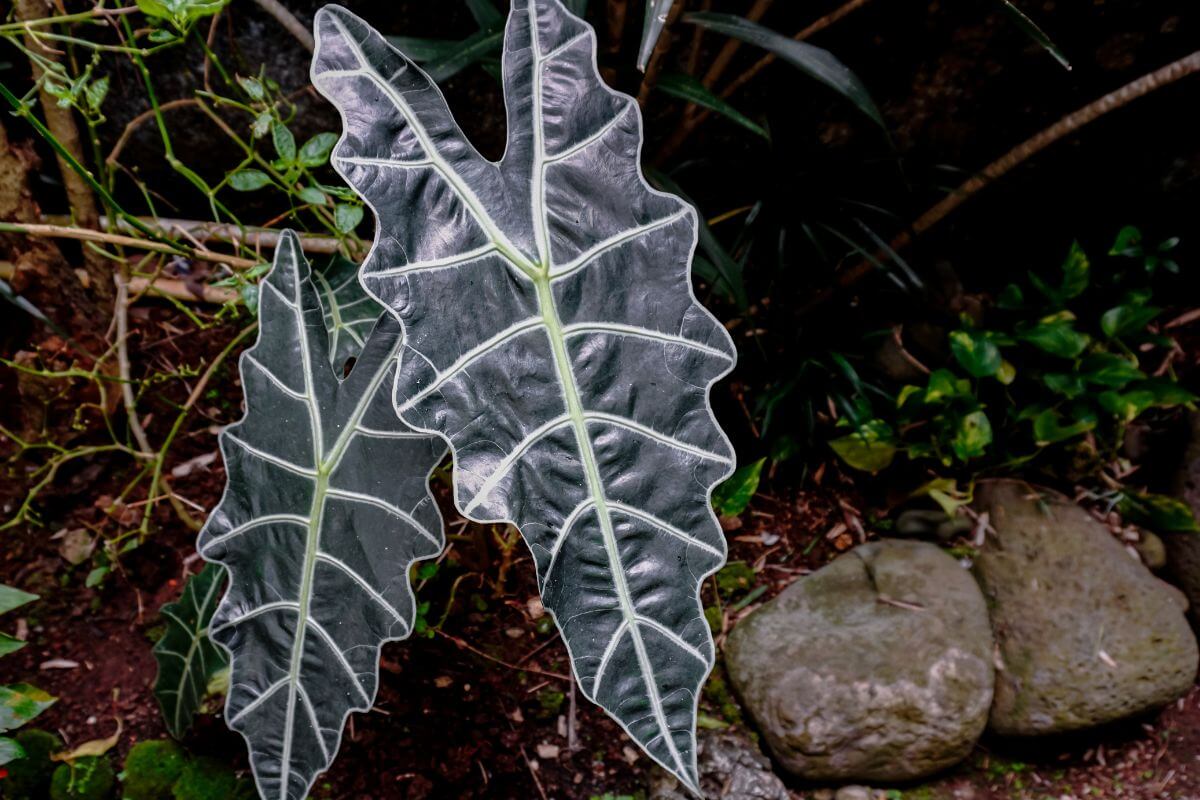
| Feature | Details |
|---|---|
| Height | Up to 3 feet |
| Bloom Time | Rarely blooms indoors |
| Soil | Well-draining, rich in organic matter |
| Light | Bright, indirect light |
Alocasia, the African Mask Plant, features large, arrow-shaped leaves with striking white veins. It prefers highly humid conditions and bright, indirect light. This plant is a favorite for its exotic appearance and unique foliage.
- Read more: Alocasia Guide
23. Rex Begonia (Begonia rex)
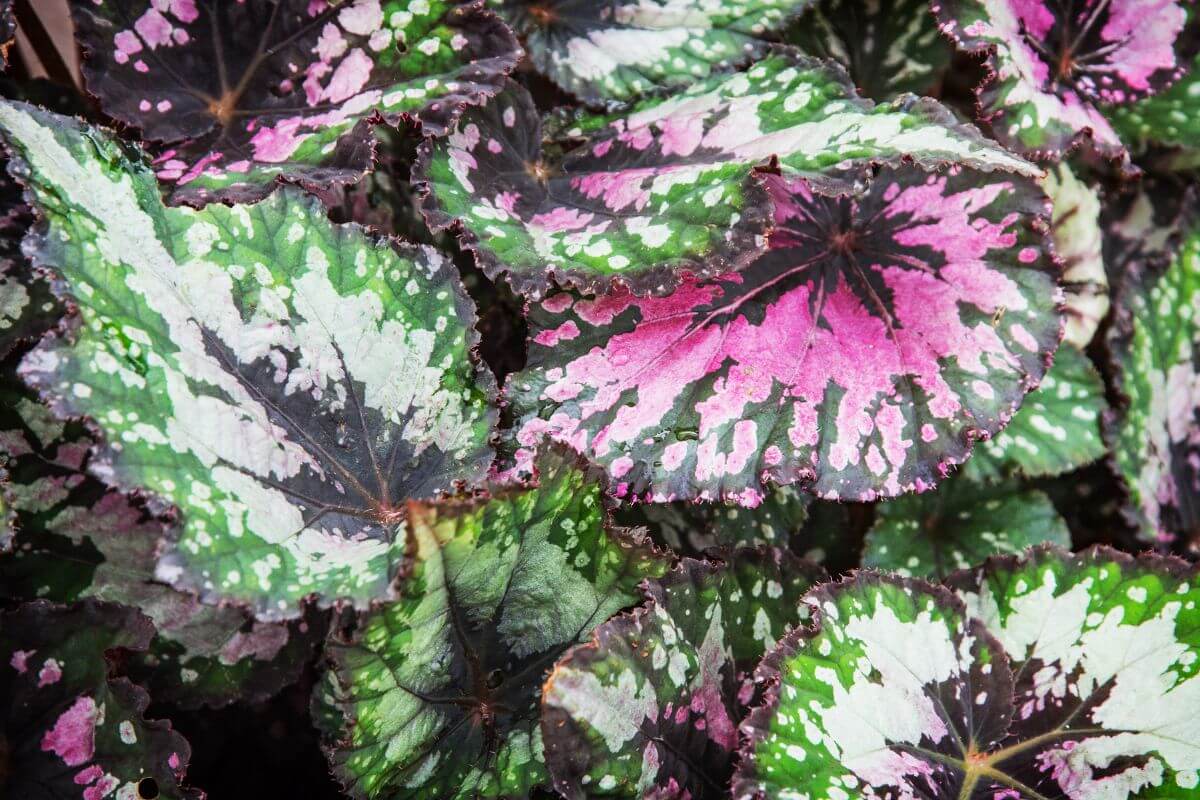
| Feature | Details |
|---|---|
| Height | 12-24 inches |
| Bloom Time | Late spring to early summer |
| Soil | Well-draining, slightly acidic soil |
| Light | Bright, indirect light |
Rex Begonia (Begonia rex) is celebrated for its large, ornate leaves that can reach up to 8 inches in length. The leaves are typically heart-shaped and feature vibrant colors, including shades of green, red, purple, and silver, often with intricate patterns and textures.
Native to tropical regions, it thrives in bright, indirect light and high humidity, making it ideal for indoor gardening.
Plants With Big Leaves Final Thoughts
Plants with large leaves come in many shapes and sizes. They are vital to our ecosystem. They not only make a striking visual impact but also provide shade, take in carbon dioxide, and give off oxygen.
Everyone can enjoy the beauty and benefits of big-leafed plants. This includes gardeners, nature lovers, expert plant caregivers, and casual plant owners.
Whether you aim to create a tropical retreat in your garden or want to add some greenery to your home, there’s a big-leafed plant for you.
With your green thumb, you can grow a stunning garden. By learning about the different types of large-leaved plants and their specific needs, you can cultivate a garden that is not only beautiful but also thrives for years.
Take a look at these interesting reads to learn more about plants:

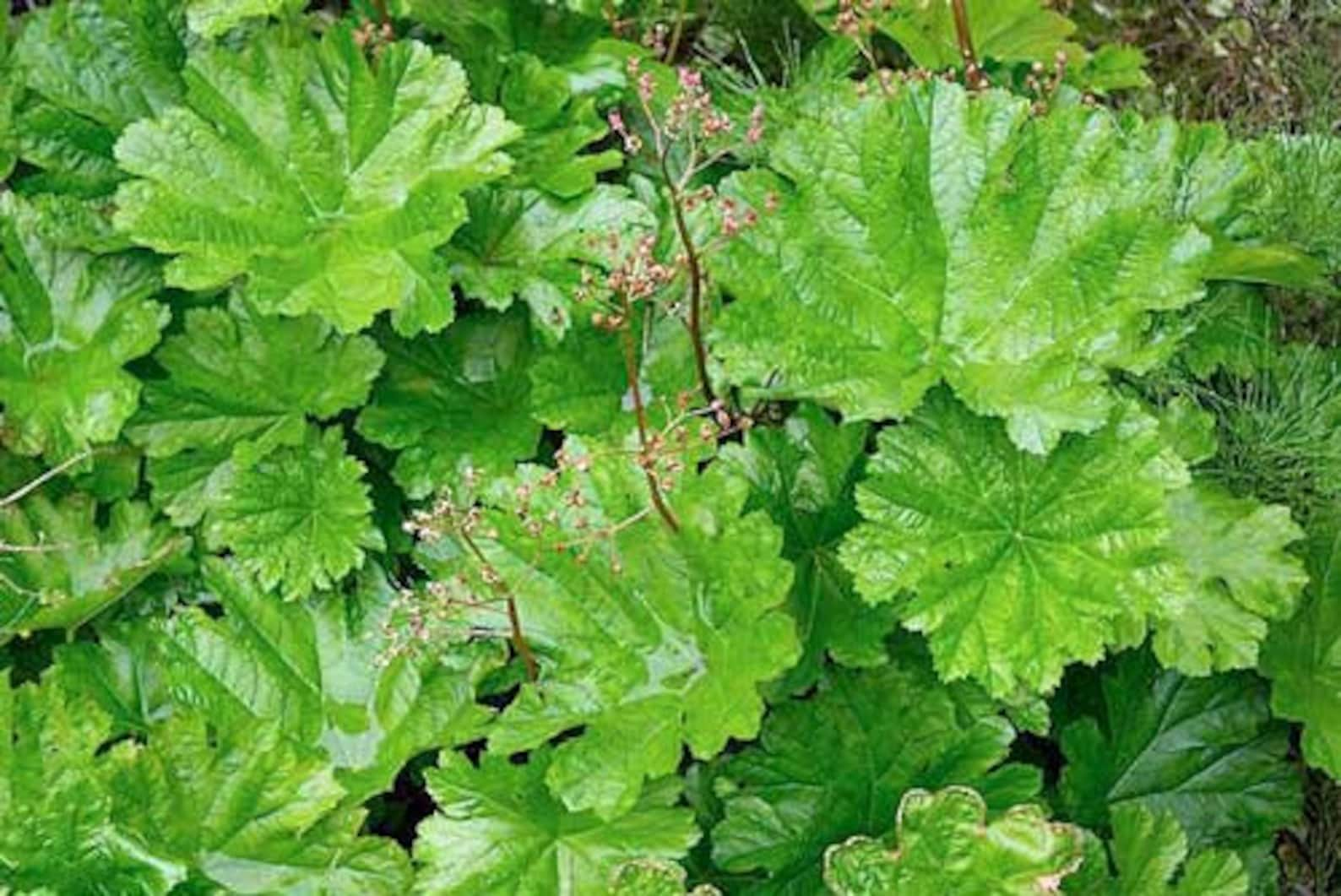

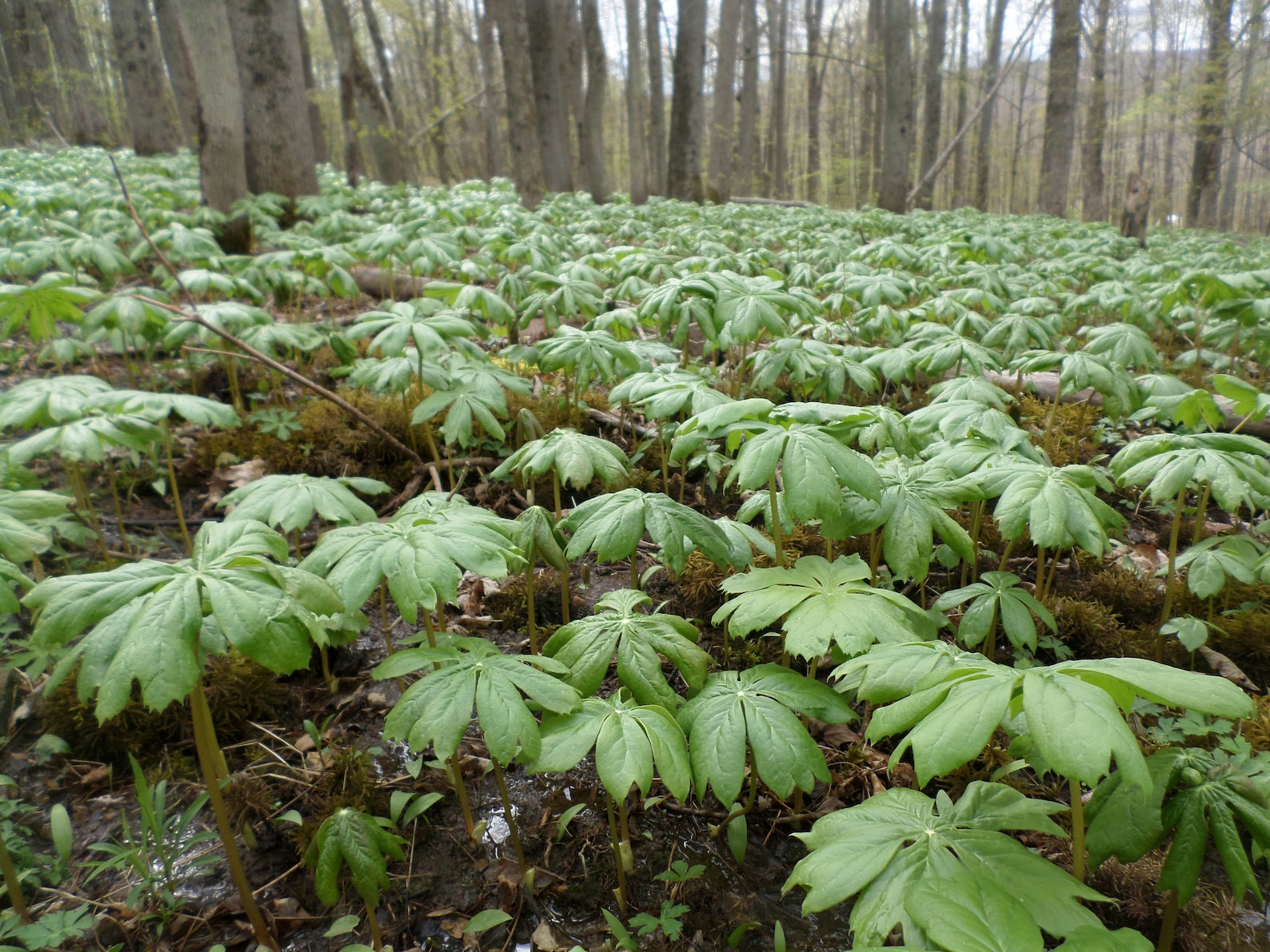
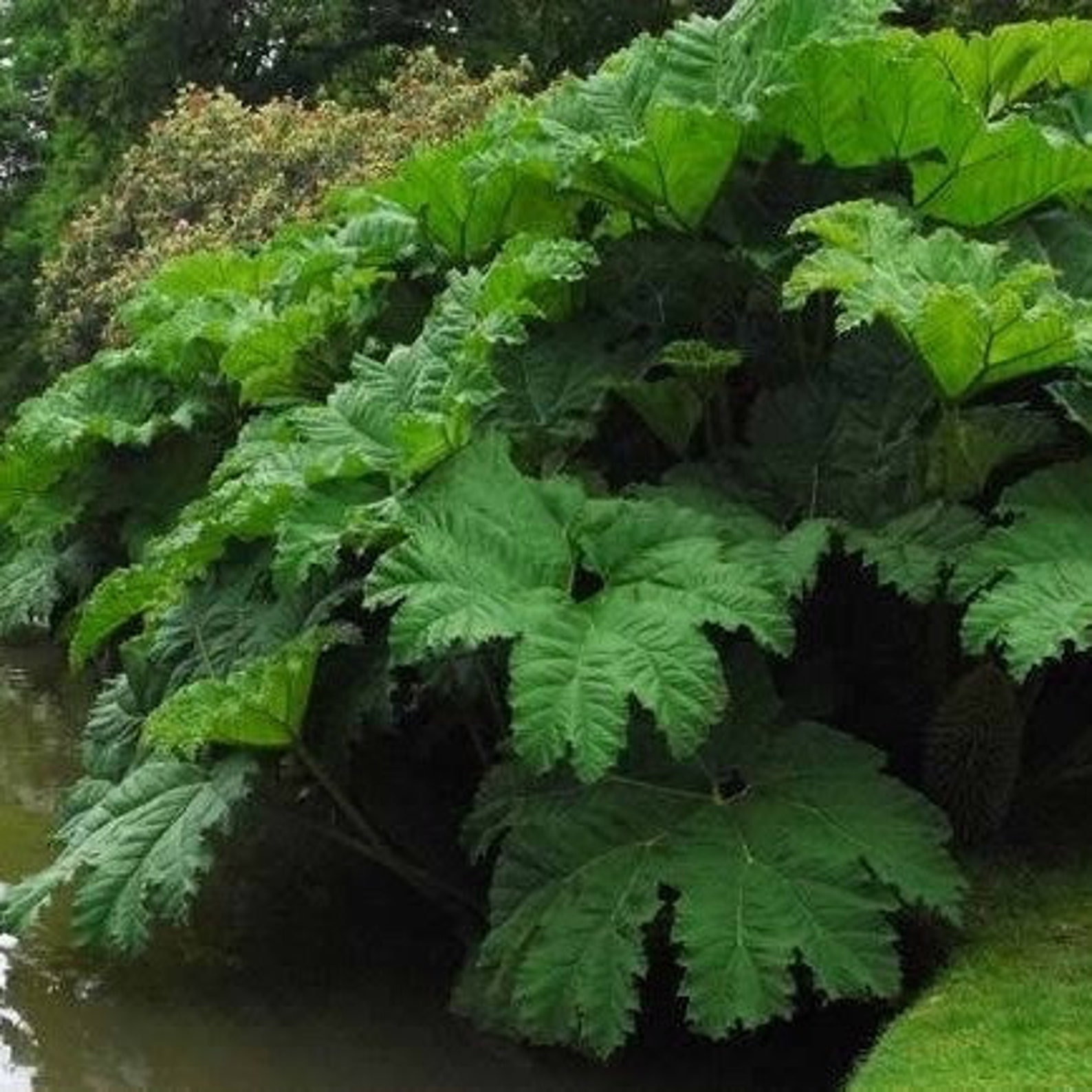

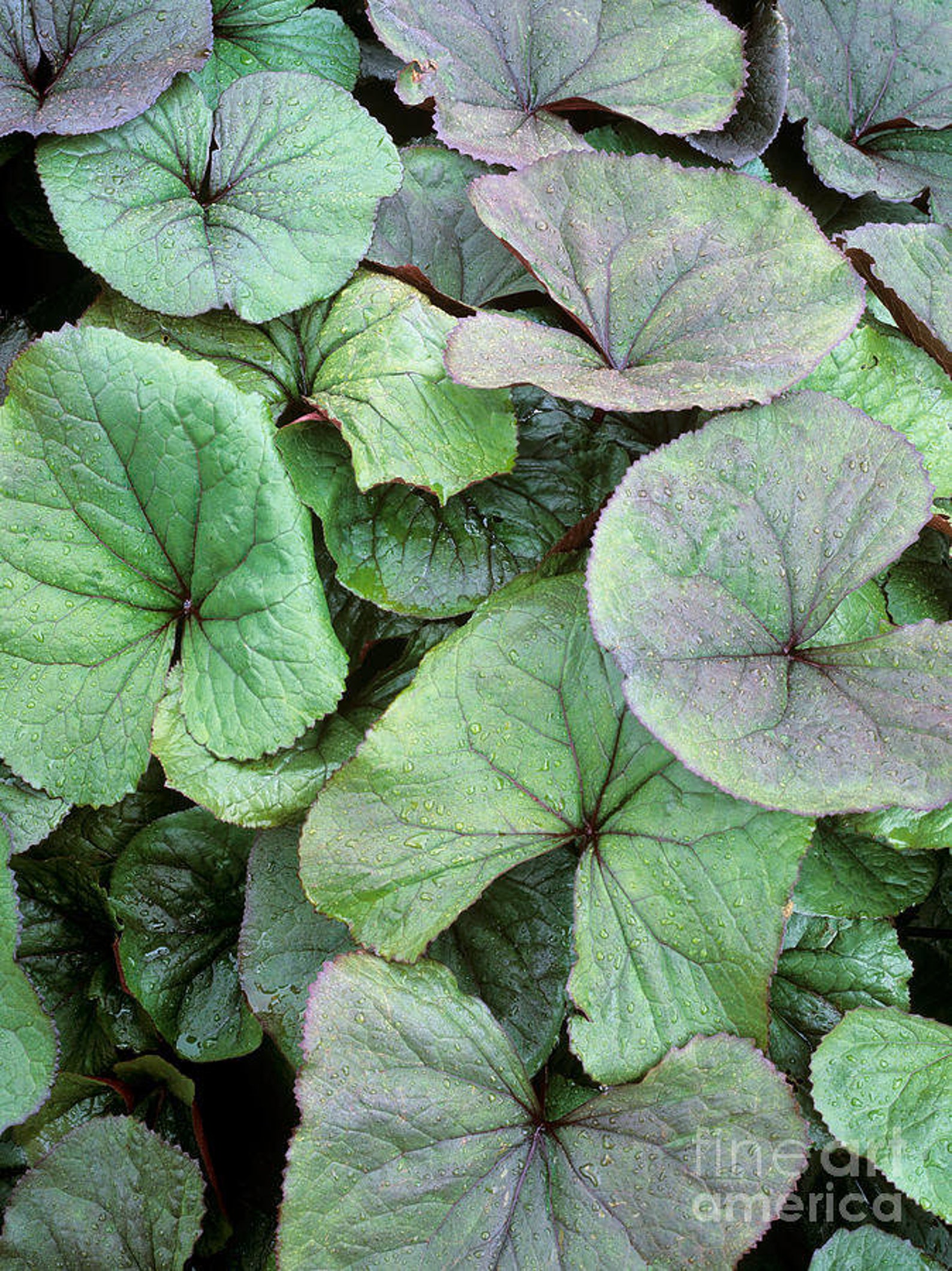








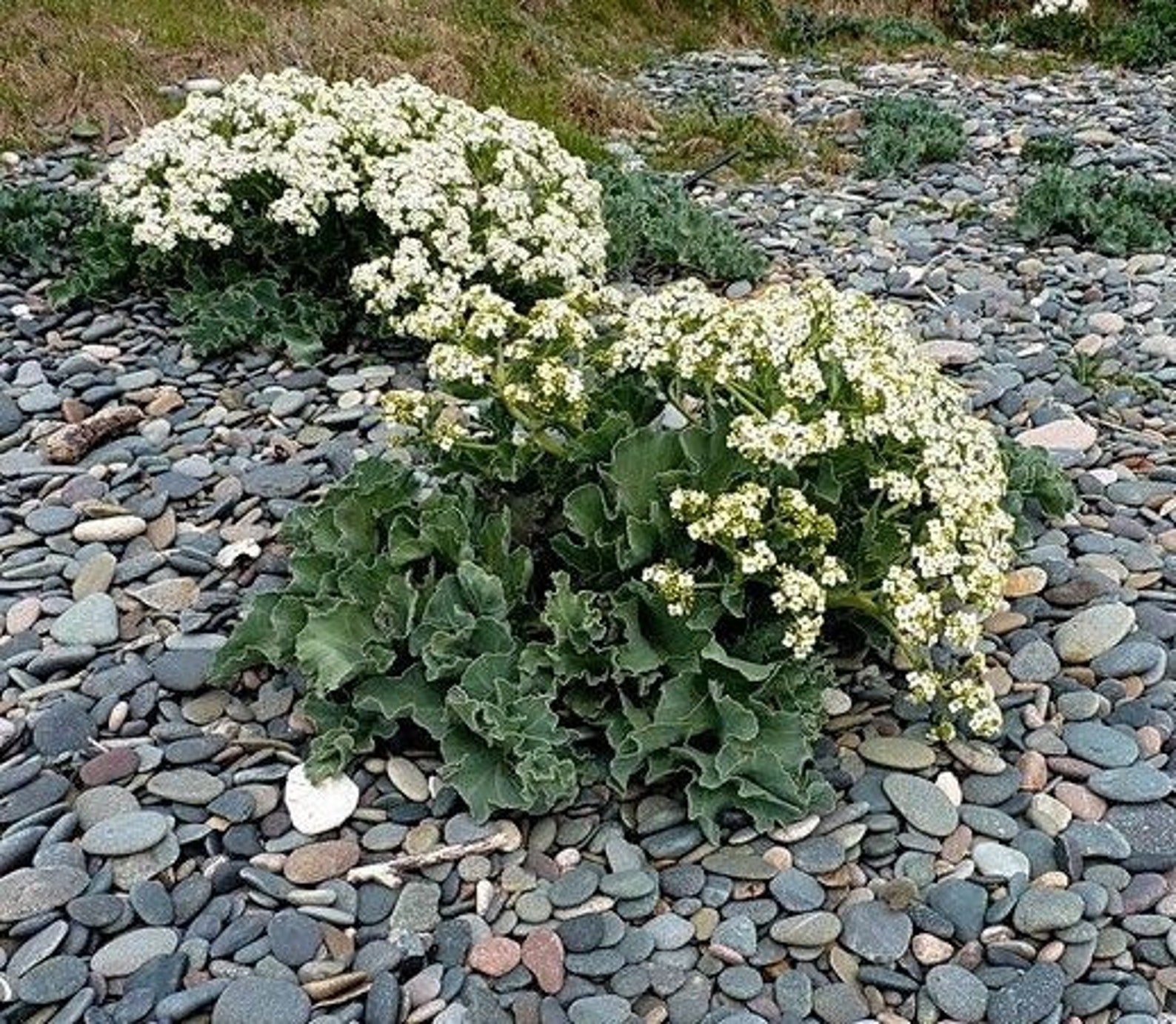









Warm thanks to you! ✨